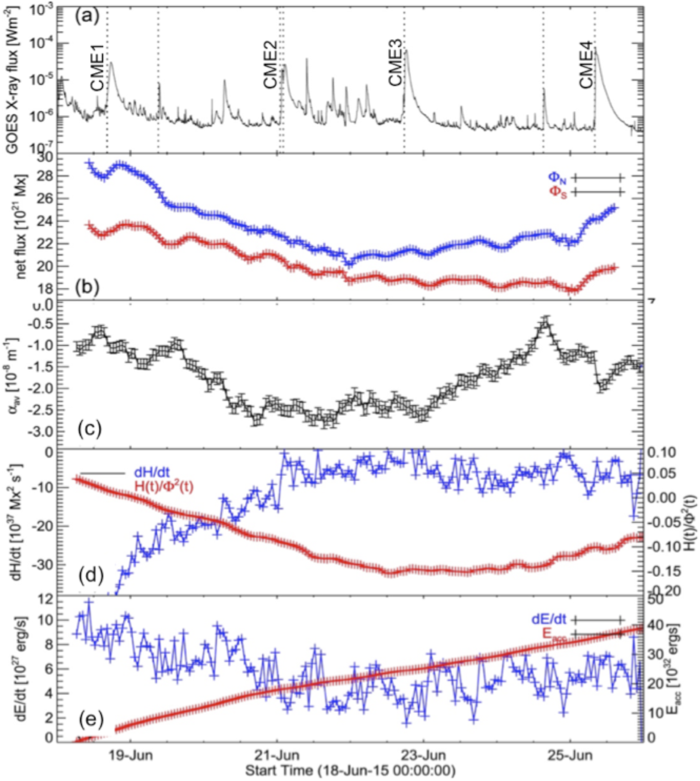Homologous CME/flares from AR 12371
From RHESSI Wiki
| Nugget | |
|---|---|
| Number: | 318 |
| 1st Author: | Panditi Vemareddy |
| 2nd Author: | Pascal Demoulin |
| Published: | 19 March 2018 |
| Next Nugget: | NuSTAR detects X-ray flares in the quiet Sun |
| Previous Nugget: | Non-Maxwellianity |
| List all | |
Introduction
Active regions (ARs) with sigmoidal structure, generally seen in soft X-rays and EUV, are prone to eruptions (coronal mass ejections, CMEs) and associated flares. Some ARs show a rapid succession of CMEs and flares over a timescale of few hours. These can have astonishing similarities in all properties, in which case they are called homologous events. The time intervals can be small compared to the typical timescale for magnetic energy build-up in the existing coronal fields, so the emergence of new magnetic flux has been suggested to be responsible for the phenomenon of repetitive flares and CMEs (Ref[1]). On the other hand, successive CMEs can also occur from ARs in a timescale comparable to energy build-up by footpoint motions in the post-emergence phase. The velocity field derived from tracked magnetograms indicates frequently persistent shear and converging motions of polarity regions about the polarity inversion line. These motions introduce huge amounts of magnetic energy and helicity in the region's magnetic structure, enabling flares and CMEs. While the stored energy configuration is vital, the persistence of sigmoidal structure is the central feature for the successive CME occurrence from a source AR and had been the central subject for eruptive activity.
Active Region NOAA 12371
AR 12371 was in a post-emerged phase, producing successive fast CMEs in the span of its disk transit (18-25 June, 2015). EUV observations at the Sun register the initiation times of four eruptions as June 18/15:05 UT (CME1), 21/00:45 UT (CME2), 22/16:15 UT (CME3), and 25/07:30 UT (CME4), respectively. Subsequently, the disk-integrated GOES X-ray light curve (Figure 1a) delineates that the CMEs are associated with long duration M-class flares. The EUV double dimming, three-part CME structure, and fast propagation speeds in LASCO FOV (>1000kms-1) altogether characterize the CMEs as homologous events.

References
[1] ["Recurrent flare/CME events from an emerging flux region"
| RHESSI Nugget Date | 19 March 2018 + |
| RHESSI Nugget First Author | Panditi Vemareddy + |
| RHESSI Nugget Index | 318 + |
| RHESSI Nugget Second Author | Pascal Demoulin + |